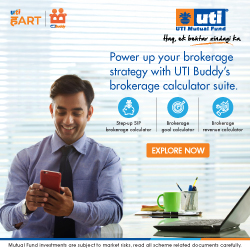Your business card is the face of your practice. It advertises the tenor and uniqueness of your brand.
As an advisor, it is important that you present a card that sets you apart and helps you impress prospective clients.
Here are some points that can add the wow factor to your business card
Power of colour
 Add colour to your business card. It makes your card look more appealing. You may choose light, pastel shades but not white or black. Business cards that are black or white are common and dull.
Add colour to your business card. It makes your card look more appealing. You may choose light, pastel shades but not white or black. Business cards that are black or white are common and dull.
Remember not to make it too colourful either. Limit it to one or two shades. Also, if you are opting for bright, loud colours, ensure that it is designed well.
Gaurav Karnik of S9 Financial Planners believes that colours make the card more appealing. “I have opted for green colour as it goes well with my company’s logo. Also, green is associated with money and finance and symbolises growth and harmony,” he says.
Logo
 Logo can give your brand an identity. Make sure that your logo is visually appealing, unique and simple. Complicated and common logos might not be recognisable. Keep in mind that your logo looks good on stationery, letterhead and digital media such as websites and social media platforms. You can also consider giving an embossed effect to your logo.
Logo can give your brand an identity. Make sure that your logo is visually appealing, unique and simple. Complicated and common logos might not be recognisable. Keep in mind that your logo looks good on stationery, letterhead and digital media such as websites and social media platforms. You can also consider giving an embossed effect to your logo.
Shifali Satsangee of Funds Vedaa believes a logo is a visual representation of your business. She says, “People usually notice your company’s logo and it is major factor that helps in brand building. I have chosen a rising sun as my company’s logo as sun represents light and energy.”
How to reach you
 Ensure that you have the correct contact methods on your card. Put your name, company name with logo, details of social media accounts such as Twitter handle and Facebook book and website link on the front of the card. You may omit your office address as your website can lead them to your office location.
Ensure that you have the correct contact methods on your card. Put your name, company name with logo, details of social media accounts such as Twitter handle and Facebook book and website link on the front of the card. You may omit your office address as your website can lead them to your office location.
Simply put, avoid putting non-essential information like fax number, office address and home address.
Deepak R Khemani, a Mumbai based IFA, feels an IFA should not clutter his business card with too much information. “I have just added my phone number, website and my email address because I wanted people to directly call me on my phone. If I put my address of Mumbai, a prospective investor from Pune may not approach me,” he says.
What about texture?
Avoid thin paper and shiny coating, as it does not convey professionalism. Textured or matte finish paper can be a better option. Invest in good stock paper so that it feels pleasing to the touch.
Attractive font
Select a font size that will make it easy to read. Opt for serif font type (Garamond, Caslon style fonts) or a sans serif (Helvetica Neue, News Gothic, Eurostile style fonts). Avoid Comic Sans, Papyrus or Brush Script.
However, ensure that you use not more than two fonts across the content.
Include a tagline
Add a tagline to your logo. This will strengthen your brand identity. Also, adding a tagline will make your clients know the vision of your company. Ensure that your tagline is unique and simple. Use no more than six words and copyright your tagline to make sure no one else is using it.
Shefali believes adding a tagline differentiates your brand and helps clients in recalling your brand.
Use the back of your card
 Most people turn a card over to see what is on the back. This makes it a great opportunity for subconscious branding.
Most people turn a card over to see what is on the back. This makes it a great opportunity for subconscious branding.
Utilise the empty space. You can share a financial quote or a chart highlighting long term returns from mutual funds compared to other asset classes such as gold and real estate.
Suresh Sadagopan of Ladder 7 Financial Advisories feels that utilising the back of your business card with some financial quote or your vision helps build trust among clients. “Clients usually expect an advisor’s contact information on their card with the back left empty. When you utilise the reverse of your card with a goal based message, it directly delivers your seriousness and thoughtfulness for  your business,” he says.
your business,” he says.
Vaibhav Rane, a Mumbai based IFA, believes in writing a hand written message on the back of his business card. “The hand written message creates a personal touch and makes it easy for me to make clients understand the concept of money and investments better,” he says.








